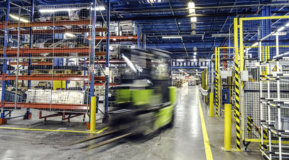
We’ve all heard the phrase digital transformation, but did you know that edge architectures are enabling the future? While this may sound like marketing hype, it can’t be denied that we are living in a time of rapid technical and societal transformation. The way we design and build technical architectures is changing. The new technical capabilities available are, in turn, enabling extensive societal changes in how we work and live. It seems reasonable that organizations that proactively plan and lay the technical foundations required can enable this change for their organizations.
However, this type of global transformation can be disruptive, not to mention scary for those affected by the changes. What technical transformations are already in progress, and what is the best way to be ready for this future?
The Edge is an Emerging Model
A good starting point to ground our discussion of digital transformation is the Edge. It’s important to understand that the Edge is not necessarily the same architecture that we described 10 years ago. It is not a precise place, but instead, a compute model that “brings computation and data storage closer to the location where it is needed” [Wikipedia]. HPE defines it this way:
Edge computing is a distributed, open IT architecture that features decentralized processing power, enabling mobile computing and Internet of Things (IoT) technologies.
Put simply, the edge computing model moves compute to where the action is.
Compute is no longer confined to the boundaries of a data center, nor a public or private cloud. And the devices gathering and sharing data that will be turned into information (with compute processes) no longer need direct human intervention.
The Internet of Things (IoT) is also a new type of compute platform. IoT assumes that all sorts of devices can get on a network and uniquely identify themselves to other devices on the same network. This allows devices to share data and even perform compute operations in the location the devices are physically located. These can be industrial devices that track the inner workings of a factory or farm, commercial devices such as light bulbs and other sensors, and even home devices such as baby monitors or refrigerators. Many of the devices can be managed by mobile phone apps, adding even more nodes that must be considered.
Of course, a new model of compute that involves so many types of data sources will depend heavily on its network to be successful. In addition to security considerations with all of these data points, networks need to be designed so that they reliably transport data to be computed at the Edge itself. The data may also need to be transported to public or private cloud instances for retention or more in-depth compute.
Networking architecture is also evolving with the emergence of 5G. 5G is also a platform that consists not only of the 5G radio, but also flexible core architectures and the growing willingness to perform compute at the edge. 5G will enable fast, stable connectivity between a larger number (not to mention more types) of devices than even cellular networks can handle.
Societal Impact of Emerging Tech
While this shift to a new computing model is exciting for technologists, it is important to pause and realize that architectures are never built just because we have the tools. We build architectures to support the requirements of applications that are needed for society to function.
People don’t always move as swiftly as the technology, and sometimes with good reason. Even though we have the tech, there are questions to be considered about the application of it. For example, will the IoT model enable easier access for all with smart cities and buildings, or will it bring more surveillance that puts our most vulnerable populations in danger?
These changes will probably change how we perform our work. When talking about the future of work, two main areas will impact humans. One is automating tasks, from the mundane to the highly precise. Large-scale automation will be possible by using robotics and artificial intelligence. Will this put people out of work, or will it create new, more meaningful work for everyone?
The other way people talk about the future of work is by examining the modes of work available. Is working from home viable? What about the gig economy? And what technologies are required so that everyone can participate?
Digger Deeper
In the next few posts, let’s dig deeper into the technical requirements and societal implications for smart cities and buildings, IoT, and the future of work.




